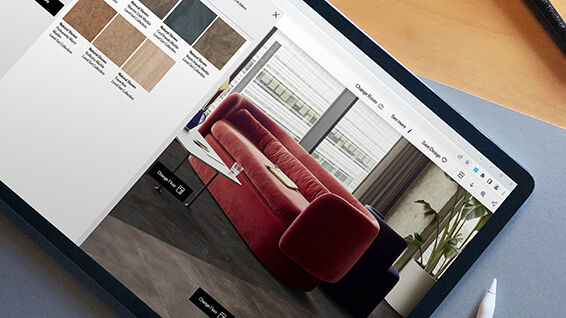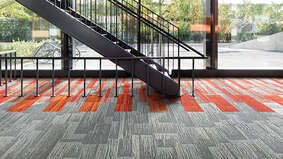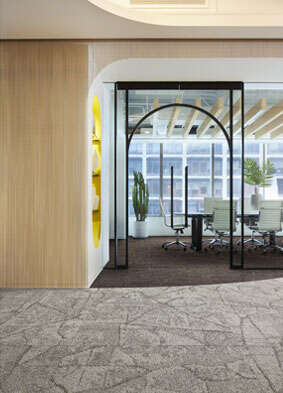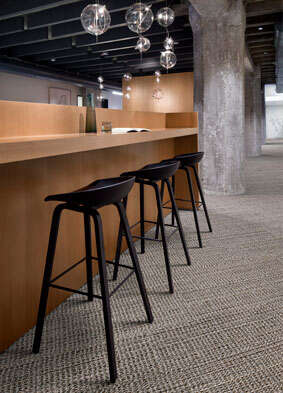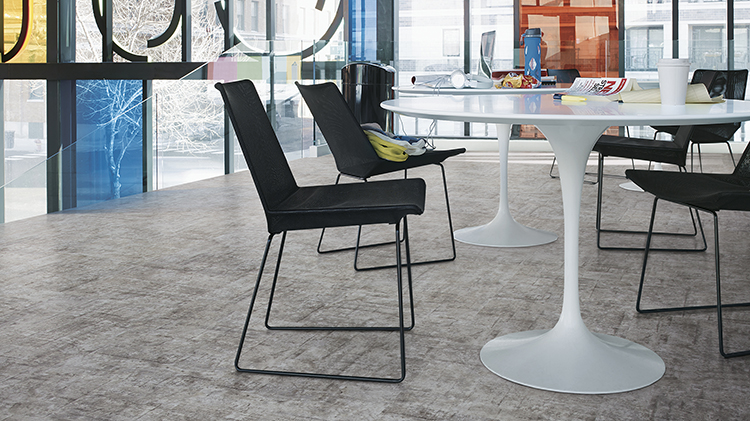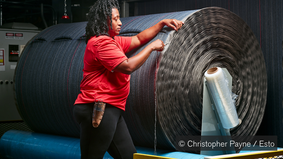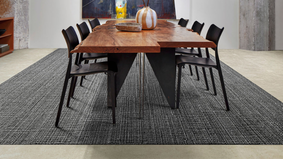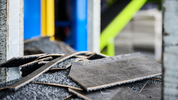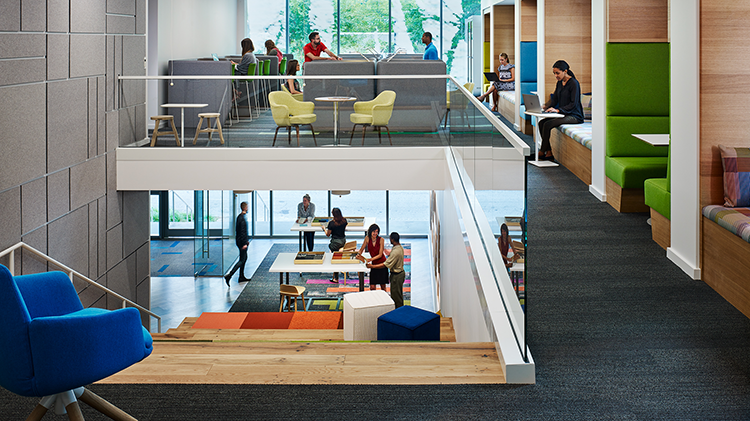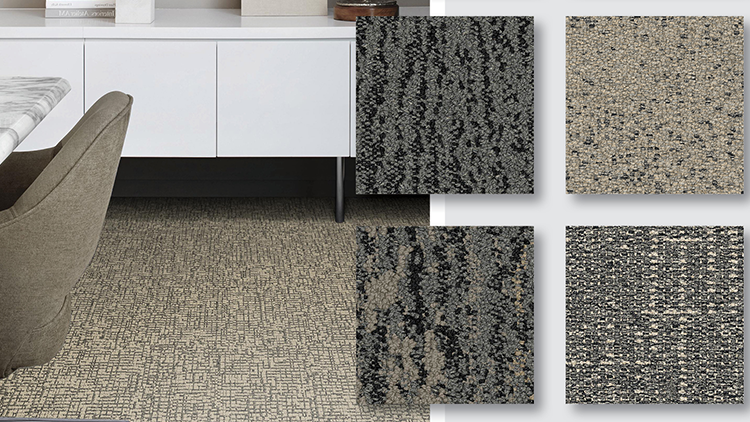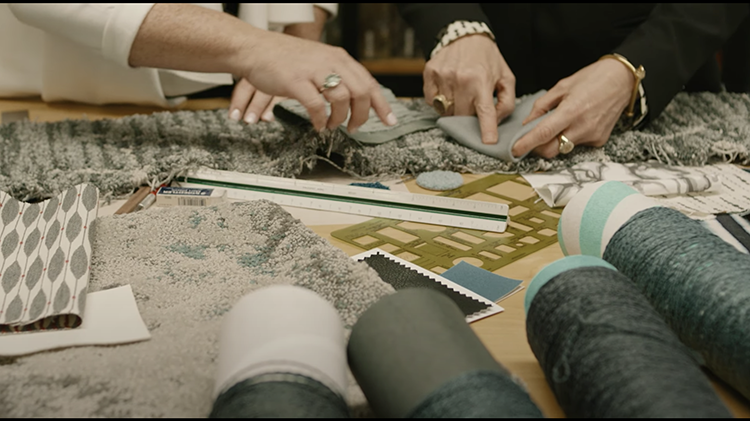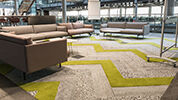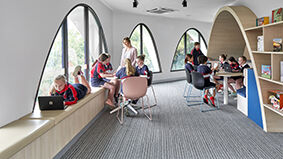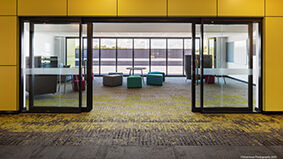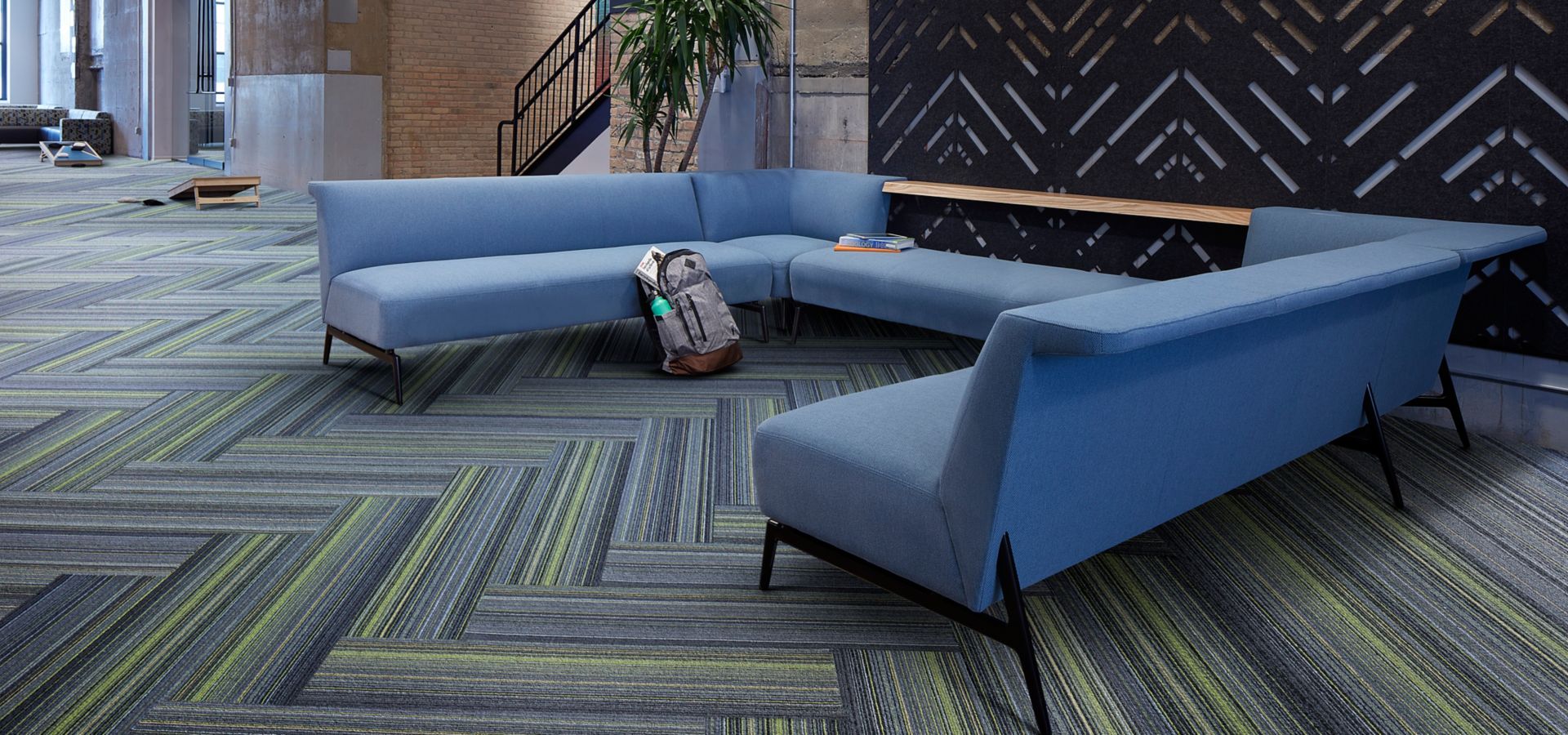Mission Zero: Measuring Our Progress
Interface's sustainability journey is made more focused by measuring our progress.
Our EcoMetrics™ measurement system is designed to quantify the “metabolism” of our operations. In other words, how much we take, in terms of materials and energy, how much we make, in terms of product, and how much we waste, in terms of wastes and emissions.
2017 Highlights
Product Carbon Footprint – The average carbon footprint of our carpet is down 66% since 1996
Energy Use – Energy efficiency at manufacturing sites has improved by 43% since 1996
Renewable Energy – 88% of energy used at manufacturing sites is from renewable sources
GHG Emissions – GHG emissions intensity at manufacturing sites is down 96% since 1996
Raw Materials – 58% of raw materials in the products we sell are from recycled or bio-based sources
Water Use – Total water intake intensity at manufacturing sites is down 88% since 1996
ReEntry – Diverted 13 million pounds of post-consumer carpet from landfills
Waste – Waste sent to landfill is down 91% and total waste disposal is down 49%
Net-Works – Collected and shipped 163 thousand pounds of fishing nets to our yarn supplier Aquafil for recycling
ENERGY
As part of our Mission Zero® commitment, Interface® has set a goal to source 100% of our energy needs from renewable sources by 2020. To achieve this, we have a simple strategy – improve our energy efficiency and increase our use of renewable energy. We have taken an aggressive approach to reach this goal, installing renewable energy systems at our factories, and purchasing renewable energy for our facilities around the world.
Energy Use
Maximizing energy efficiency is the first step in reducing our energy use. Interface has implemented several unique energy saving measures in our factories. Building energy management systems helps us understand and reduce our use of energy. For example, the energy monitoring system used in our Scherpenzeel factory, the Energy Mirror, tracks real-time energy use and prominently displays the results allowing employees at all levels to identify ways to reduce use. We have also replaced and upgraded equipment with more efficient alternatives, including HVAC units and lighting systems, and we’ve installed skylights and solar tubes to allow daylight in and reduce the need for electricity. All of the efficiencies, improvements and, most importantly, kilowatts not used add up to significant progress since we began in 1996.
Total energy use at our global factories is down 43% per unit of product since 1996.
Renewable Energy
Our goal is to one day run our factories on 100% renewable energy. Today 88% of the energy used at our manufacturing facilities is renewable.
Our renewable energy use is made up of green gas (45% of total energy), green electricity (43% of total energy), and our on-site solar PV array in Scherpenzeel (less than 1% of total energy).
Globally, 100% of the electricity used at our manufacturing sites is renewable. The electricity is made renewable through the purchase of market-based renewable energy instruments such as Renewable Energy Credits (RECs) in North America and Asia, or from Guarantee of Origin (GOs) in Europe, and then applying these instruments to our grid sourced electricity. We receive renewable electricity directly from our supplier in the UK through the supplier’s own internal allocation and we generate electricity on-site through a solar photovoltaic array in Scherpenzeel which produced 19 MWh of eletricity.
Globally, 79% of the thermal energy used at our manufacturing facilities is renewable. It is made renewable using directed biogas in our North American and Netherlands manufacturing sites.
Our Renewable Energy Evolution:
2016 – 100% of electricity used at manufacturing sites is from renewable sources
2015 – Interface joins the RE100 and pledges to 100% renewable electricity at all manufacturing sites
2015 – Using directed biogas at our Troup County U.S. manufacturing sites
2015 – Using RECs (Renewable Energy Credits) to make electricity use at our China and Thailand manufacturing sites renewable
2014 – Using directed biogas at our Scherpenzeel, The Netherlands manufacturing site
2007 – Using RECs (Renewable Energy Credits) to make electricity renewable at our larger manufacturing sites
2003 – Partnered with the City of LaGrange, Georgia to use methane gas from a local landfill as a renewable fuel source for our Interface factory in LaGrange.
2005 – Interface won “Energy Partner of the Year” award from the U.S. Environmental Protection Agency’s (EPA) Landfill Methane Outreach Program (LMOP) for this project.
2000 – Installed a 5 kW photovoltaic array at our Interface factory in Scherpenzeel, The Netherlands
2000 – Installed a 17kW photovoltaic array at our Interface factory in LaGrange, Georgia.
In 2017, our 88% renewable energy is made up of green gas (45%), green electricity (42%), landfill gas and on-site solar PV arrays (less than 1%).
Emissions Reductions
We have reduced our net greenhouse gas emissions per unit of product from manufacturing sites by 96% from 1996 to 2017 through diverse strategies including process efficiencies, energy efficiencies (such as lighting and equipment replacement), fuel switching, direct use of renewable energy and use of market-based renewable energy instruments.
[Net GHG emissions are gross emissions less the carbon benefits of market-based renewable energy instruments such as Directed Biogas and Green Gas Certificates for thermal energy, Renewable Energy Credits (RECs) for electricity in North America and Asia and Guarantee of Origin (GOs) in Europe.]
WASTE
We’ve gone beyond the walls of the factory to examine all aspects of our business for opportunities to reduce and eliminate waste, including product design, packaging and transportation.
Our waste reduction efforts have resulted in a 91% decrease in total waste to landfills from our carpet factories since 1996.
